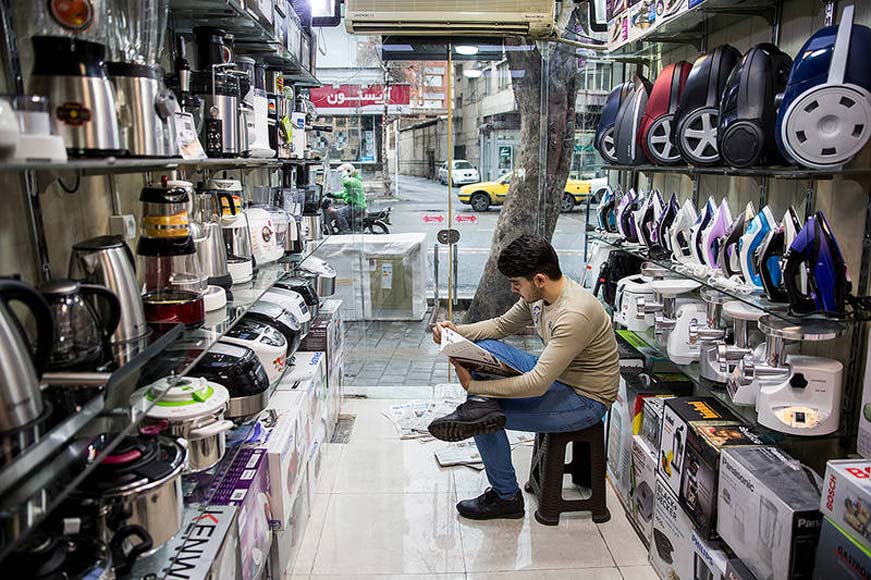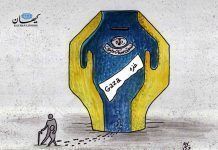May 20, 2018
By Roshanak Asteraky
The rapid increase in the price of goods in 2018 is worrying Iranian consumers and retailers alike. The sharp drop in the value of the rial against major foreign currencies has caused concern among many businesses which import products from abroad. Many shops in Tehran’s old historical Bazaar and some retailers around the country have closed their stores in protest in recent days.
The Central Bank of the Islamic Republic of Iran has warned that wholesale prices and the cost of raw material will continue to rise. Consumers should expect a significant increase in the cost of goods at the start of the holy month of Ramadan. Meanwhile, government officials have assured the public that food prices will not go up.
The evidence, however, contradicts the government’s forecast. The cost of food products has increased by 12 percent since late March. All indications are that they will continue to rise because many wholesalers refuse to distribute their products.
Peyman, who owns a supermarket in Ahvaz, capital of the southwestern province of Khuzestan, told Kayhan London: “The food market experienced massive volatility after the government tried to stabilize the dollar by setting a single foreign exchange rate. Many wholesalers were reluctant to sell their products to retailers. Others demanded outrageously high prices which have shocked most business owners like me. They want to cover any potential loss because prices continue to rise. Wholesalers fear that they may have to pay their suppliers more than what they charge their customers. That’s why many of them have stopped trading. Others prefer to wait and get the highest price for their goods.”
“The high cost of goods is alarming. But the worst is yet to come. We can expect massive inflation and further price increases. The cost of many imports has already gone up including soft drinks, chocolate, and the cigarette. There is a shortage of goods. Many wholesalers don’t even sell their stock,” Peyman explained. “People have been upset about the rising cost of goods. They have been understandably angry with the regime for its mishandling of the situation.”
Peyman believes that retailers and customers will be hardest hit by the price hikes.
The head of the IranianChamber of Guilds, Ali Fazeli, recently said: “The public should know that business guilds play no role in importing, manufacturing, pricing and distributing goods. They are paid seven to 17 percent of the profit as their fee, except in the case of fruit and vegetables.” Fazeli warned that the price of goods would rise despite the government’s assurances to the contrary.
Why has the move to set a single foreign exchange rate caused the price of food products to go up?
The head of the Union of Food Wholesalers and Retailers, Mohammad Aqataher, said: “It is unclear how much the price of food products will go up. None of the merchants has been able to benefit from the low exchange rate of 42,000 rials to a dollar so far. The goods that are currently in the market had been imported long before the crisis.”
He added: “Many food products, except tea and rice, are smuggled into the country illegally using open market exchange rate for the dollar. Tea and rice importers don’t know if they can get the low exchange rate of 42,000 rials to the dollar. There is also no guarantee that the government would subsidize some of these imports, as it has promised.”
The price hikes have impacted a wide variety of businesses.
Amirhossein, his brother and father have owned and operated a homeware appliances store for 26 years. He told Kayhan London: “The sales of house appliances are significantly down. There are fewer customers these days, especially those paying with cash. Retailers such as me feel the pressure every day.”
“There is no coherent guideline for pricing goods. Customers and retailers face an unpredictable market,” Amirhossein explained. “Some people think that the price increase means more money for the retailers. But that’s not the case. Our profit margin remains unchanged while our costs keep rising. Higher prices mean fewer customers and greater financial loss.”
Amirhossein points out that inflation increases the running cost of businesses including salaries, wages, shipping, utilities, advertising, insurance, and taxes. “We are forced to sell goods on installment. But in most cases, we have to make full cash payments to the importer or wholesaler. In many instances, it takes two years to collect the money for an item that we had already paid for in full. Many business owners go bankrupt and close down their stores,” he explained.
Behrouz, a salesman, working in a jewelry store in Tehran said: “Contrary to common belief, selling gold is a risky business. There is no guarantee that the shop would make money. There are days when we don’t sell a single item. Meanwhile, we have to pay $2,000 a month for rent. Business owners deal with difficult problems. At one point the store did so well that the owner hired three salespersons and a worker. But he has fired everyone except me.”
He added: “Most people who come to our shop are selling gold. We used to have many customers who bought gold jewelry for weddings. But not anymore. The families of the bride and groom traditionally bought gold coins and other gift items in addition to the wedding rings. But, nowadays, they settle for just a necklace and bracelet. There are many instances when a newlywed sells the pieces of jewelry they’d received as gifts back to us at a reduced price.”
Behrouz explained: “Gold prices fell sharply after the Nowrouz holidays and the depreciation of the rial. Gold traders were shocked when the rial fell to 60,000 to a dollar. The market went dead. All merchants were scared. Many of them closed their stores until April 11. We were all hoping for some clarity. But Trump withdrew from the JCPOA (Joint Comprehensive Plan of Action, better known as the Iran nuclear deal.) Some officials welcomed the move! Only God knows what will happen to the market. You can’t imagine the grim mood in the Bazar unless you are here to see it for yourself. Everyone is worried and depressed.”
The head of Tehran’s Gold and Jewellery Traders Union said: “The volatile gold market has made trading risky and difficult since the start of the new year (March 20.) A shop may not be able to replace a gold jewelry item for the same price it bought the piece before. So, stores stand to lose a lot of money. We hope for the market to stabilize soon. The current trend is not good for the gold and jewelry market.”
Retailers and consumers are extremely concerned about the high cost of goods. Store owners prefer a stable, calm and rational market than an unpredictable one that pushes the prices up.
There is, however, more bad news in store for retailers and consumers regarding further price hikes. The head of the Union of Retail Chains, Amir Khosrow-Fakhrian, said on May 16: “There has been a 13 percent increase in the production level of goods. However, the extra revenue has only covered part of the cost of the raw material. The manufacturers haven’t seen any profit.”
“Many manufacturers have increased their prices after obtaining permits from relevant trade unions. These increases are normally coordinated and take place at the beginning of the year. The price of liquid detergent has gone up by 15 percent for instance,” Khosrow-Fakhrian explained. “The sharp drop of the rial against the dollar is the main cause of the price increase. We import most of the raw material. Higher salaries and wages have also played a role in the price hikes. The price increases we’ve witnessed are accurately calculated and completely justified.”
It is unclear how much higher the price of goods will go, or whether the Iranian rial will fall against the dollar once the U.S. Department of Treasury revokes sanction relieves and imposes new ones on the country in November. What is certain is that people will have a difficult time buying food and other necessities.









